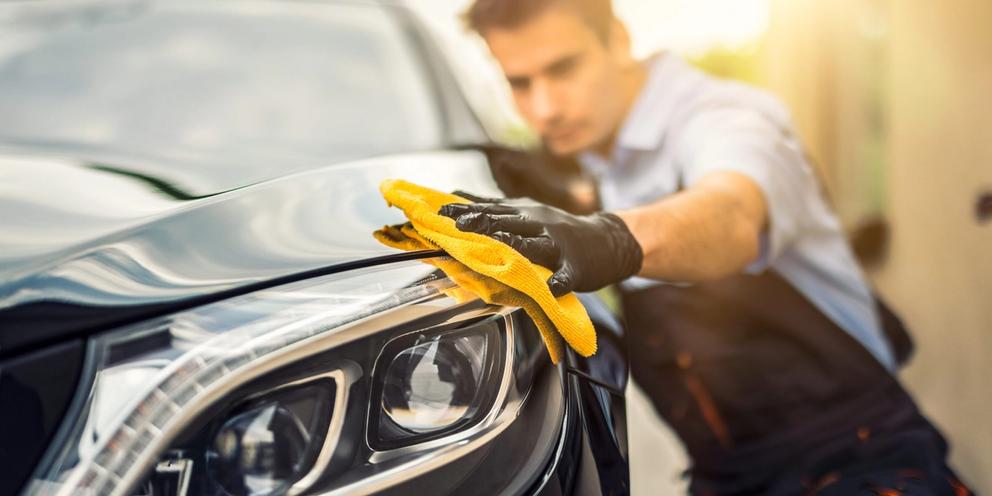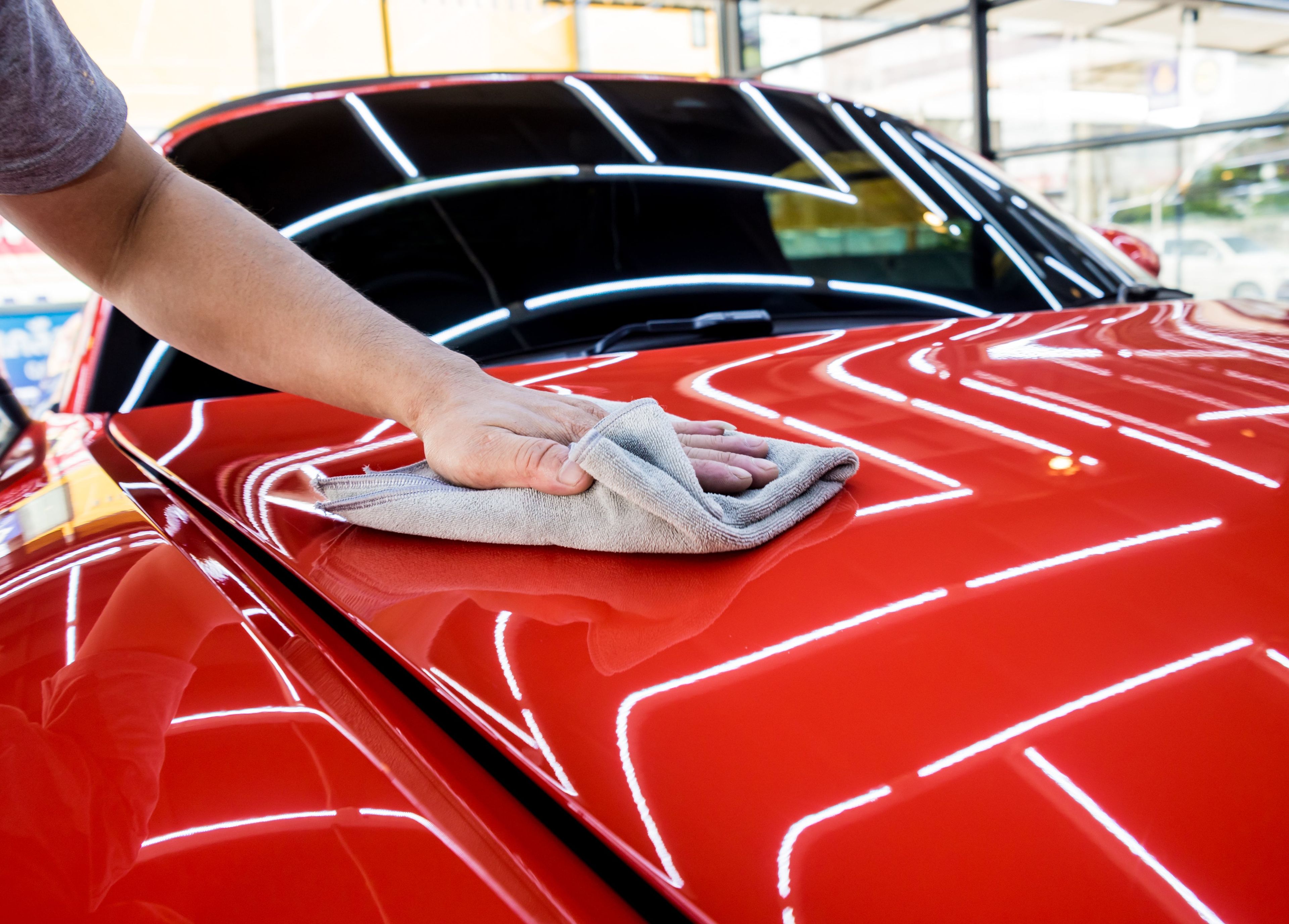
Your Guide to Car Exterior Detailing
Car detailing refers to cleaning and restoring a vehicle, so it looks like it’s brand new. The process is much more detailed than a simple car wash, and it’s always done by hand. This introductory guide to car detailing contains the basics you need to know to clean and restore your car’s exterior.
What Is Car Exterior Detailing?
Essentially, car exterior detailing involves deep cleaning accompanied by the restoration of damaged parts of the car. Detailing helps protect your car’s paint, glass, and body from the effects of harmful UV rays and pollutants. If you’ve ever considered how much it is to paint a car, you’ll understand the importance of regularly detailing your vehicle to preserve its paintwork.
Source: REDPIXEL.PL/Shutterstock.com
Keep Your Car Protected with a Car Cover
Getting Set Up
The first thing you’ll need to do is gather the necessary tools. You can purchase a detailing kit with all the cleaning products and materials or create a DIY kit. These are the essentials you need for exterior detailing:
- • 1 bottle of low pH car wash shampoo
- • 2-4 wash mitts
- • 2 large buckets
- • 10-12 premium microfiber towels
- • 1 clay bar or clay mitt
- • 1-2 bottles of ceramic coating
Things to Avoid When Exterior Detailing
Avoid direct sunlight and cross-contamination of cleaning products. Detailing products don’t perform well under direct sunlight or on hot surfaces. The sun also dries the soap and water as you are washing, which can be troublesome. So, before you start detailing, park your car in a shady spot that still has easy access to a hose. Also, avoid using standard car sponges. The porous surface traps dirt and grit, which can scratch your clear coat during the washing process, giving your car a cloudy finish.
Washing and Drying
The first step is to spray down the car with water. This should remove all the debris, dirt, and bird droppings accumulated on the car. After the initial rinse, you can start cleaning the whole car with diluted car shampoo to fully eliminate all the grime. Pressure wash the wheel and wheel wells and use a soft bristle brush to clean out the tire tread. Use two buckets for cleaning the car, one for soapy water and the other one to rinse cloths and mitts. If the water in the rinse bucket gets too dirty, throw it out and fill it up with fresh water. Make sure you wipe the car’s surface in straight lines; doing it in circles can cause swirl marks.
Shop Our Entire Selection of Car Covers

Source: Roman Zaiets/Shutterstock.com
Polishing and Waxing
Polishing helps buff out minor scratches, while waxing creates a thin protective layer. This means you don’t necessarily have to polish every time you detail your car, but you should examine your car closely for scratches or swirl marks in the protective coating that need to be buffed out. Before polishing, it is crucial to clay your car to remove contaminants and residual soap from the surface. These contaminants can damage your car paint and dull your shine. Apply a clay lubricant to the car, and then glide the clay bar over the surface using gentle pressure. Use a clean microfiber cloth to remove the excess lubricant.
If you find a mark, apply a small dab of polish to a foam applicator pad and gently rub it using small circular motions. You can also use a polishing machine to cover larger areas faster. After polishing is complete, apply wax over the entire surface of your car. Although you technically don’t have to wax the windows, doing so gives them an extra layer of protection. Choose between carnauba wax and synthetic wax, which has less shine but better overall protection. Waxing should be done in small sections to allow the proper drying time. Apply the wax using a damp microfiber cloth, and then allow it to dry. Buff it out using a clean, dry microfiber cloth for a final shiny finish.

Source: Bhakpong/Shutterstock.com
Protecting Your Hard Work
A car cover is the final step in your detailing routine. Although waxing can go a long way toward protecting your car, a car cover adds an extra barrier that helps prevent scratches and sun damage while parked. Covering your detailed car with a custom cover instead of a universal cover helps prevent the wax from rubbing away prematurely.
Our Platinum Shield car cover is excellent for protecting your car outdoors. It features three layers of protection, including an ultra-soft fleece liner that won’t remove the car’s wax or scratch the paint. We sell semi-custom and custom car covers for indoor and outdoor use designed for your car’s specific make and model. Trust our team with your car cover needs to protect the hard work you put in your vehicle.
Updated